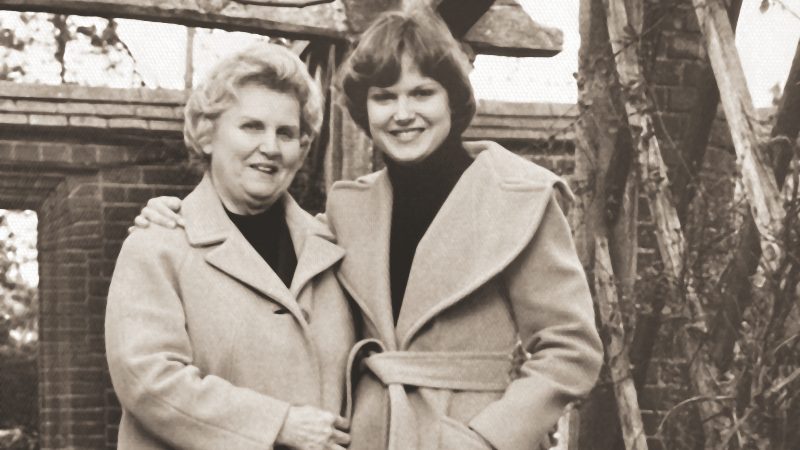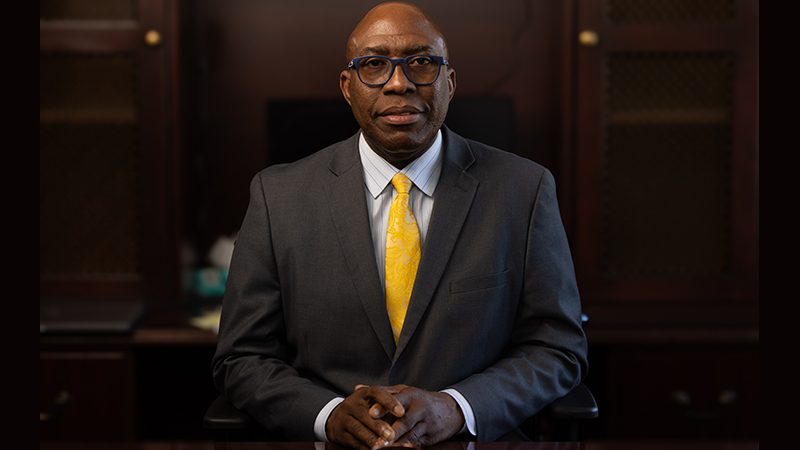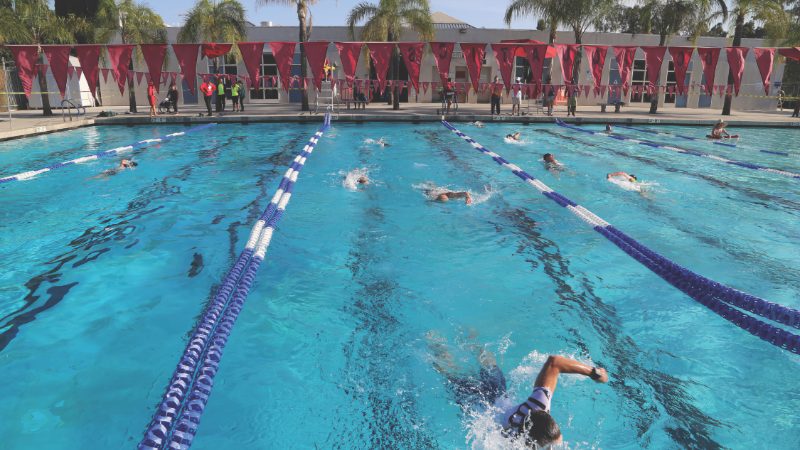
As a social worker, I remember my reaction when I first became aware of the national crisis involving missing and murdered indigenous women and girls (MMIWG). I had just finished watching the movie Wind River with my cousin, a counselor and advocate in Albuquerque, N.M. At the closing scene, a title card reads: “While missing person statistics are compiled for every other demographic, none exist for Native American women. No one knows how many are missing.”
I couldn’t believe what I was reading. I asked my cousin whether the statement was true, and he confirmed it. My heart broke. I had no idea this was even a thing. That’s not possible, I thought. How can we exclude such a beautiful, powerful, and resilient people from a very important issue? Immediately, the advocate in me wanted to jump up and shout, “Hey! There’s a crisis here! Wake up, America!”
Little by little, I began doing some research on how I could help. First, it started with posting information on my personal social media profiles. Then, I talked to my dear friend, Denise, who is a member of the Port Gamble S’klallum Tribe in Washington state, to get her perspective on the issue.
She said, “Sometimes you do not realize something is a big issue until it hits you personally. This is unfortunate. One of the school-aged students I cared for in my first job as a high school student went missing. It broke my heart to see the once innocent child I knew now missing as an adult female. It did not seem like MMIWG was that big of a problem because we did not see it on the news, but our reservation and urban communities were worried about our women and girls.”
Denise recently participated in an urban photoshoot to bring awareness to the MMIWG crisis. Regarding the women in the photos, the photographer from Lex C. Imagery stated, “I put them in a setting where people all around are living their happy lives, yet Native women have this issue going on that is so overlooked that we feel drowned out by society.”
According to the Urban Indian Health Institute (UIHI), “Native women living on tribal lands are murdered at an extremely high rate of more than 10 times the national average according to [the] Department of Justice (DOJ). Due to the Urban Indian Health Institute’s limited resources and the poor data collection by numerous cities, the 506 cases identified in this report are likely an undercount of the missing and murdered indigenous women and girls in urban areas.” This same study indicates that in the Southwest region alone, which includes Arizona, there are 157 reported cases of MMIWG. This doesn’t include all the cases that go unreported. In 2016, there were 5,712 cases of MMIWG reported, but only 116 were logged into the DOJ database.

A November 2022 report created by Arizona State University (ASU) states that, “Intergenerational trauma affects clans and tribes down through the generations. Families are not given any closure or the ability to properly bury a loved one. Statistics include intimate partner violence, stalking, sexual violence, and physical violence. Almost 40% of female victims who need services can’t get them compared with only 15% of non-Hispanic white female victims who fall through the cracks…. Our hope is that the study will lead to a story of a new beginning. One where all of us listen to what the science is saying, what the victims are saying, and to unite to prevent violence wherever it happens.” The National Institute of Justice (NIJ) shares, “Most federally recognized tribes don’t have the legal authority to criminally prosecute non-Indians, even for crimes committed on tribal lands.”
In July 2022, the Washington State Patrol (WSP) officially launched the Missing Indigenous Person Alert System or M.I.P.A. It is the first in the country. The system will add the Missing Indigenous Person designation to the Endangered Missing Persons Alert System. It will join the existing AMBER and SILVER alerts.
What I have shared with you on the subject of MMIWG is merely the tip of an incredibly large iceberg of crisis for the American Indian people. Two pages simply aren’t enough to share the full scope of this serious issue. It hits close to home as some of our staff and students at HIS have been directly affected by this crisis. When I look into the resilient faces of our little girls and young ladies on campus and think that, according to statistics, one or more could end up on the MMIWG list, it breaks my heart. One of the biggest reasons we do what we do at HIS is to give our students the opportunity to live beyond the statistics, rise above the intergenerational trauma, and give back to their communities in a way that brings about meaningful change to help end the epidemic of violence.
____________________
By Kimberly Cruz
Mujeres y niñas indígenas desaparecidas y asesinadas

Como trabajadora social, recuerdo mi reacción cuando me enteré por primera vez de la crisis nacional que involucraba a mujeres y niñas indígenas desaparecidas y asesinadas (MMIWG). Acababa de terminar de ver la película Wind River con mi prima, consejera y defensora en Albuquerque, Nuevo México. En la escena final, un cartel dice: «Si bien las estadísticas de personas desaparecidas se compilan para todos los demás grupos demográficos, no existe ninguna para las mujeres nativas americanas. Nadie sabe cuántas han desaparecido».
No podía creer lo que estaba leyendo. Le pregunté a mi prima si la información era cierta y me la confirmó. Me partió el corazón. No tenía ni idea de que eso existiera. Eso no es posible, pensé. ¿Cómo podemos excluir a un pueblo tan hermoso, poderoso y resiliente de un tema tan importante? Inmediatamente, la defensora que había en mí quiso saltar y gritar: «¡Un momento! ¡Aquí hay una crisis! ¡Despierta, Estados Unidos!».
Poco a poco, comencé a investigar un poco sobre cómo podía ayudar. Primero, comenzó con la publicación de información en mis perfiles personales en las redes sociales. Después, hablé con mi querida amiga, Denise, que es miembro de Port Gamble Tribu S’klallum en el estado de Washington, para conocer su perspectiva sobre el tema.
Me dijo: «A veces no te das cuenta de que algo es un gran problema hasta que te toca personalmente. Eso es lamentable. Uno de los estudiantes en edad escolar que cuidé en mi primer trabajo como estudiante de high school desapareció. Me partió el corazón ver a la niña que una vez conocí y que ahora desaparecía como una mujer adulta. No parecía que MMIWG fuera un problema tan grande porque no lo veíamos en las noticias, pero nuestras comunidades urbanas y de reserva estaban preocupadas por nuestras mujeres y niñas».
Denise participó recientemente en una sesión urbana de fotos para crear consciencia sobre la crisis de MMIWG. Con respecto a las mujeres en las fotos, el fotógrafo de Lex C. Imagery declaró: «Las puse en un entorno donde todo tipo de gente vive feliz, pero las mujeres nativas tienen ese problema que se pasa tanto por alto que nos sentimos ahogados por la sociedad.
Según el Instituto de Salud Indígena Urbana (UIHI), «las mujeres nativas que viven en tierras tribales son asesinadas a una tasa extremadamente alta de más de 10 veces el promedio nacional, según el Departamento de Justicia (DOJ). Debido a los recursos limitados del Instituto de Salud Indígena Urbana y a la deficiente recopilación de datos por parte de numerosas ciudades, es probable que los 506 casos identificados en este informe sean un recuento insuficiente de las mujeres y niñas indígenas desaparecidas y asesinadas en las zonas urbanas». Ese mismo estudio indica que solo en la región del suroeste, que incluye Arizona, hay 157 casos reportados de MMIWG. Eso no incluye todos los casos que no se denuncian. En 2016, se reportaron 5,712 casos de MMIWG, pero solo 116 se registraron en la base de datos del Departamento de Justicia.

Un informe de noviembre de 2022 creado por Arizona State University (ASU) afirma que «el trauma intergeneracional afecta a los clanes y tribus a lo largo de las generaciones. Las familias no tienen un pase de página ni la capacidad de enterrar adecuadamente a un ser querido. Las estadísticas incluyen la violencia de pareja, el acoso, la violencia sexual y la violencia física. Casi el 40% de las víctimas femeninas que necesitan servicios no pueden obtenerlos, en comparación con solo el 15% de las víctimas blancas no hispanas que caen en el olvido. Nuestra esperanza es que el estudio conduzca a la historia de un nuevo comienzo. Uno en el que todos escuchemos lo que dice la ciencia, lo que dicen las víctimas, y nos unamos para prevenir la violencia dondequiera que ocurra». El Instituto Nacional de Justicia (NIJ) comparte: «La mayoría de las tribus reconocidas por el gobierno federal no tienen la autoridad legal para enjuiciar penalmente a los no indígenas, ni siquiera por delitos cometidos en tierras tribales».
En julio de 2022, la Patrulla Estatal de Washington (WSP, por sus siglas en inglés) lanzó oficialmente el Sistema de Alerta de Personas Indígenas Desaparecidas o M.I.P.A. Es el primero en el país. El sistema agregará la designación de Persona Indígena Desaparecida al Sistema de Alerta de Personas Desaparecidas en Peligro. Se unirá a las alertas AMBER y SILVER existentes.
Lo que he compartido sobre el tema del MMIWG no es más que la punta de un iceberg increíblemente grande de crisis para el pueblo indígena americano. Dos páginas simplemente no son suficientes para compartir el alcance total de ese grave problema. Es un golpe cercano a casa, ya que algunos de nuestros miembros del personal y estudiantes de HIS se han visto directamente afectados por esa crisis. Cuando miro los rostros resilientes de nuestras niñas y señoritas en el campus y pienso que, según las estadísticas, una o más podrían terminar en la lista de MMIWG, me quebranta el corazón. Una de las principales razones por las que hacemos lo que hacemos en HIS es para darles a nuestros estudiantes la oportunidad de vivir más allá de las estadísticas, superar el trauma intergeneracional y retribuir a sus comunidades de una manera que genere un cambio significativo para ayudar a poner fin a la epidemia de violencia.
____________________
Por Kimberly Cruz






